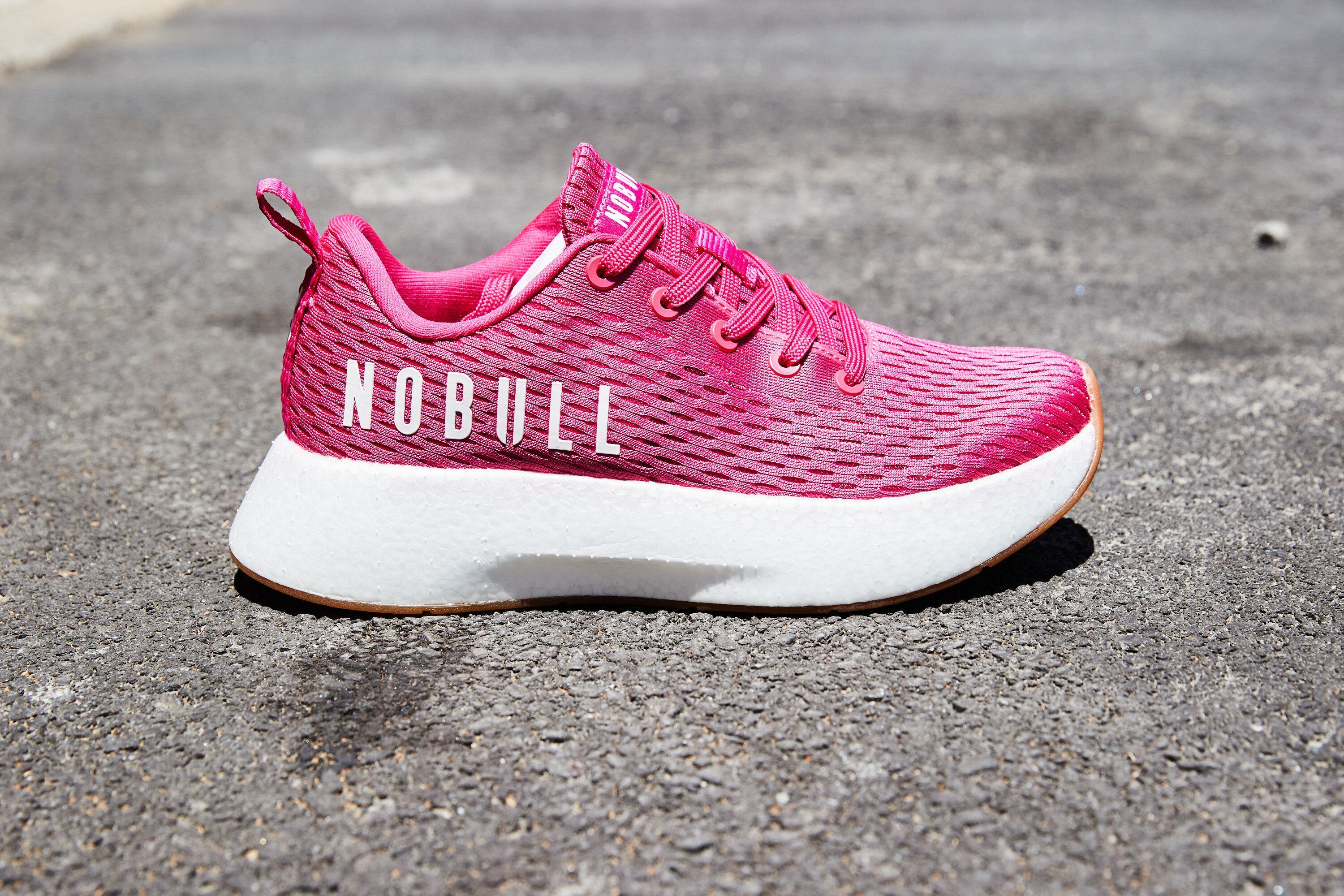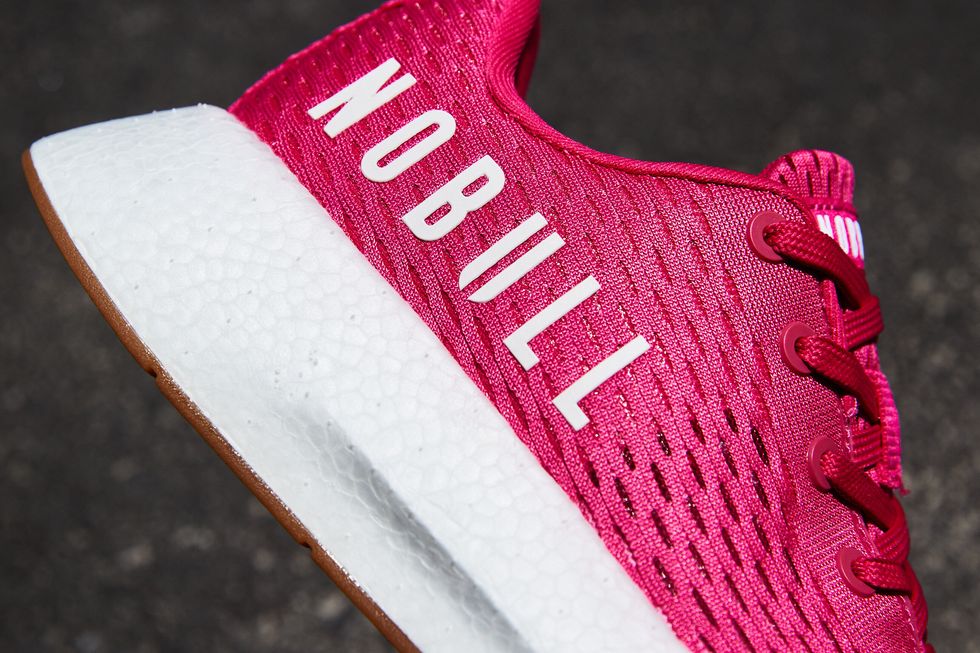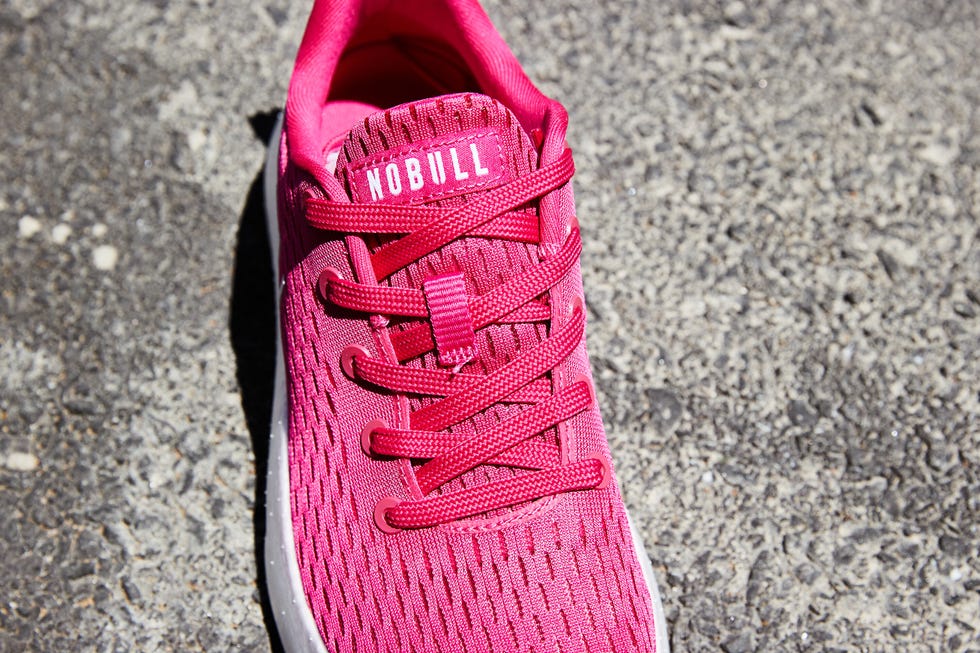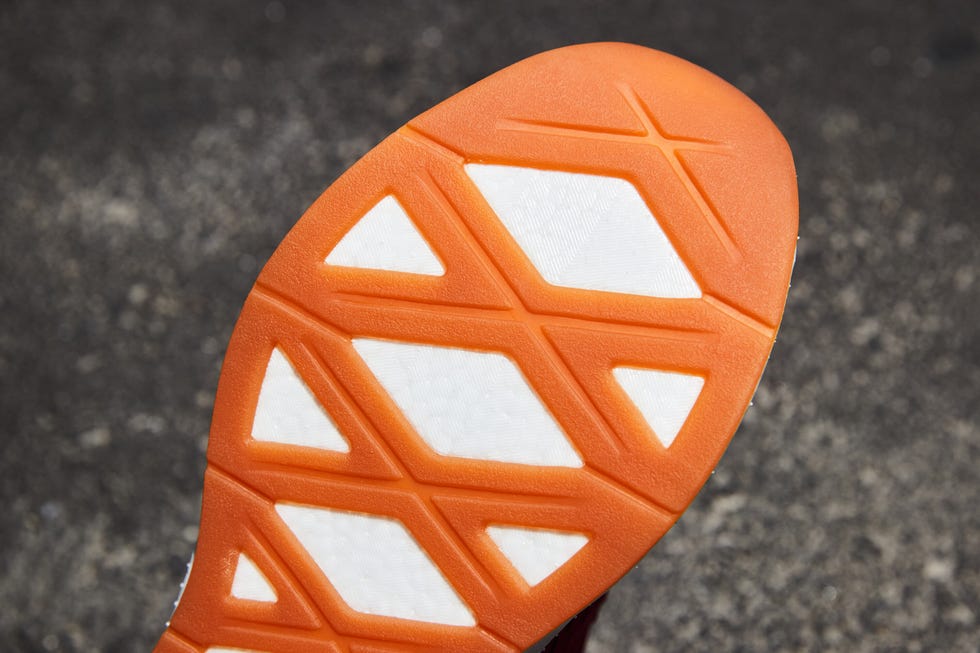The RW Takeaway: New running tech gives this stylish shoe a bouncy, firm midsole that’s capable of serious mileage. But, the upper isn’t yet on par with trainers from established brands.
- Rubber outsole offers good durability, but has less wet-surface traction
- Midsole’s premium foam and nylon plate deliver unexpectedly high energy return
- Tongue and lacing can be difficult to tighten for a secure fit
Price: $179
Type: Road
Weight: 9.5 oz (M), 7.6 oz (W)
Drop: 11.3 mm (M), 9.5 mm (W)
Buy Men’s Buy Women’s More Images
More From Runner's World

Nobull isn’t new to running shoes. The brand’s had its horns in the game since the pre-pandemic spring of 2018. But those first models, called Runners, were best for short jogs and gym workouts rather than dedicated training miles. The “plus” is more than a minor upgrade; this is a different shoe entirely. In fact, its midsole punches above those of some brands that have been entrenched in shoe tech for decades. Credit that bounce to a wise choice of foam.
Proof Is in the PEBA
The magic of this shoe lies in its Pebax midsole, and Nobull wasn’t stingy with the expensive foam—the midsole is a giant slab of the stuff with a nylon plate buried in the middle. It delivers a shocking amount of responsiveness and cushioning. Like many of the carbon-plated racers out now, the plate in the Runner+ spans the full midsole. We found this seems to return energy more consistently, regardless of footstrike. Plate and Pebax together, the ride leans only slightly on the firm side and packs a springiness we didn’t expect in a brand’s first “real” running shoe.
The use of Pebax almost always results in a fun ride. So, why isn’t EVA dead yet? Peep the price tag.
Landings Feel Stable, Not Squishy
“The Runner+ isn’t as soft as shoes like the Asics Novablast and not as hard as the Brooks Launch,” said one tester who logs 48 miles per week and typically prefers a stability shoe. “I have enjoyed some much softer shoes for recovery days, but now I think I prefer this feeling. I like that the midsole does not squish down when I land, so I get more support. The longest runs I have done in them were 8 and 10 miles. I worried about the sole thickness, thinking I would feel wobbly, but I did not feel that way at all. The wide base feels very stable, giving me confidence to do longer runs in them.”
Still Needs Some Work Up Top
Our testers struggled to cinch the shoe tightly for a decent heel hold, and the midfoot fit was sloppy, with bunched or puckered mesh. Make no mistake, the heel counter was sturdy—enough to rub your Achilles raw if there’s excess movement in the rearfoot. More female testers had this issue, likely because the shoe is unisex and women typically have narrower heels than men. I carved extra eyelets in my test pair so I could tie a heel-lock knot. Killed the aesthetic, but relieved my blister pain.
Testing the Runner+ during warm spring days—not to mention the jet black uppers of our sample pairs—we appreciated the breathability of the engineered mesh itself. It’s stiff until you break it in, and even then, there’s virtually zero stretch to it, but it offers a good amount of structure. With more than 165 miles on my pair, the material is holding up well despite the fraying laces.
One Wear-Tester’s Thoughts
Eileen C. | Tester since: 2019
Arch: Medium | Gait: Neutral | Footstrike: Midfoot
“Overall, this shoe has components of what makes other shoes great. For example, it had propulsive elements similar to some Sauconys or Hokas, but the Runner+ just did not feel as polished. I will say that the foam underfoot was responsive and did allow me to have efficient stride over multiple miles. I used the shoe for mostly everyday training runs with some strides thrown in. Sometimes the shoe felt a bit clunky, but it didn’t run slow even with the clunky feeling. While the tongue was soft, it moved around a lot, and the rest of the upper was stiff and loose-fitting. But if I attempted to tighten the laces, this would create bunching around the tongue which would bother the top of my foot.”
















